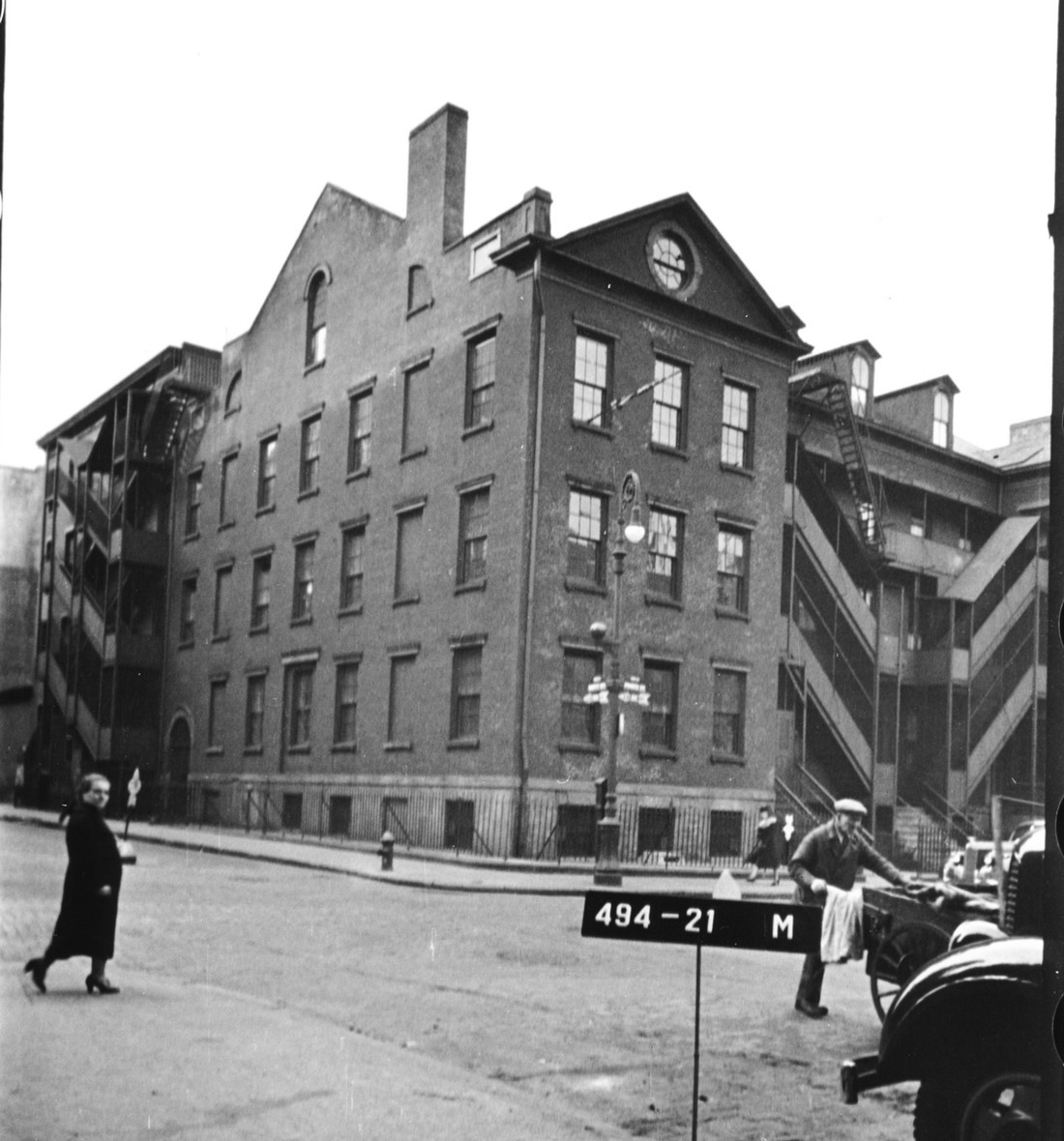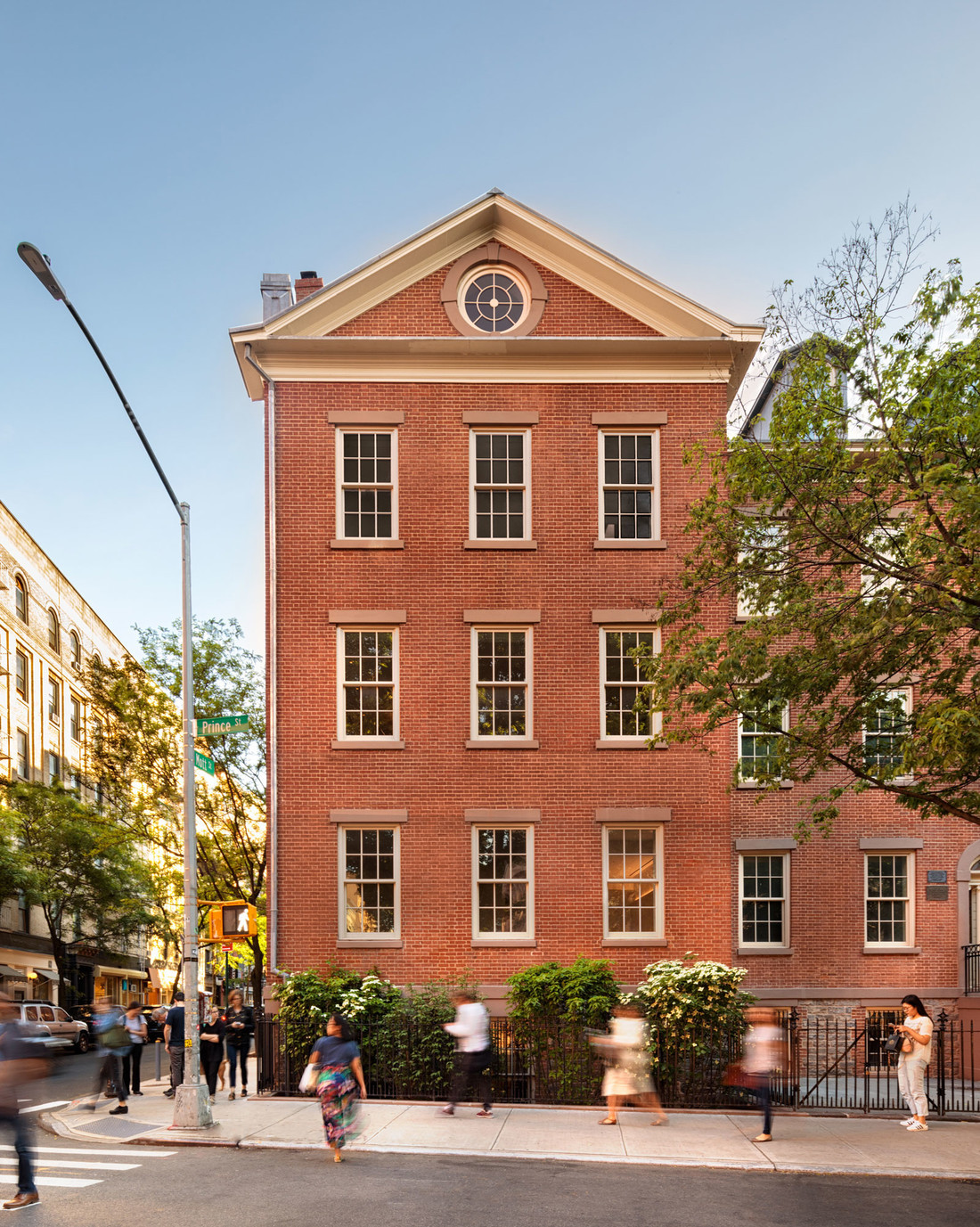Part
01
of one
Part
01
Churches in the United States: Redevelopment Research (2)
We have reviewed the previous research as requested and we can report that there is no missing text after "Finally," at the end of the second paragraph. This was an error and should not have been in the final report sent. However, we did note that there were indeed three examples presented that illustrated churches that had been restored or protected, which was not desired or asked for. Specifically, those are the examples surrounding the First Unitarian Church of Oakland, California, the First United Methodist Church, Seattle, Washington, as well as the Sacred Heart Catholic Church, Augusta, Georgia. We have removed those from this revision. As clearly outlined in the initial hour of research, it can be seen that the examples should be where the church site was sold, or a part of the site was sold and there was new development as a result. To that end we are keeping one of the examples verbatim (Saint Aidan's Catholic Church, Brookline, Massachusetts), but we have added sources to that section as we noted that many things were not cited that would likely be of interest. One such example was providing a link to one of the main players, Lisa Alberghini.
For this revision, we are adding three extra examples (so this report has four in total) that will provide more color and value to the final brief. Specifically these extra examples surround churches (or property the church owns) that have been redeveloped in the United States. For each new example, we have provided information surrounding the redevelopment that included (where available) the firm(s) and individual(s) that were involved in consulting or brokering each redevelopment. The locations are urban and where land is valuable. We did note that the examples may include not only churches, but could be nonprofits that have sold property to achieve their mission, however, we could find none that fit the exact parameters of this research.
One item we want to note is that almost all the examples we looked at were disputed in some way by local residents, and the developers had, in some cases, a lengthy battle to get their plans approved. For example, the trials and tribulations of the Arlington Presbyterian Church in Arlington, Virginia can be read about here.
Saint Aidan's Catholic Church, Brookline, Massachusetts
- As the church where former President John F Kennedy Junior was baptized, Saint Aidan's Catholic Church in Brookline, Massachusetts held a unique place in American history. However, faced with rising costs and diminishing parishioners, the Archdiocese of Boston made the decision to close the church and amalgamate the parish with St. Mary’s of the Assumption. The move was not without controversy. A battle ensued in the years following its closure between developers, neighbors and town officials over what would become of the former parish.
- When the church closed at the dawn of the new Millennium (see page 83), many of the faithful lost their spiritual home, but in a twist of fate some found their way back, and are now residing in the housing units created by the development. The church's former housekeeper said, "While no one was happy at the loss of a church, they took solace in what project developers did with St. Aidan’s. It was nice to have it adapted for use for a variety of affordable housing."
- While affordable housing units were always planned for the site, battle lines were drawn over the proposed demolition of the church, and a neighborhood committee formed to oppose the demolition. To this day, feelings of resentment bubble beneath the surface regarding the eventual demolition of the church. Ultimately the non-profit affordable housing developer affiliated with the Archdiocese of Boston, the Planning Office for Urban Affairs managed to placate the opposing factions and the development went ahead.
- Lisa Alberghini, the executive director of the St. Aidan’s developer, has said subsequently that the developers engaged the community positively, and it was through the ongoing involvement of the parish and community members was key in the development that ultimately prevailed.
- Plans for a 144 unit complex were abandoned, and the project eventually became 57 affordable housing units, with an additional nine luxury units on the site of the actual church. The 57 units were built from other buildings on the site. Twenty of those units became affordable rentals, while the remainder were sold to first time house buyers. It is a testament to the needs of the community and the fulfillment of part of the church's commitment to affordable housing, that at the time of the dedication in 2010, 54 units were already occupied.
- What ultimately placated the community was opening the new housing units to members of the former parish. The former parish housekeeper is among those who have taken up the opportunity. However, as always there are two sides to every story, and the development of the site of the church into nine luxury units is still one that riles some members of the local community.
- The development was a collaboration of both public and private entities, with the town of Brookline contributing over $2 million on the basis a number of the units would provide affordable housing. The key adviser to the Boston Archdioceses was the Planning Office for Urban Affairs, an organization that is affiliated with the church and provides affordable housing options in the local area.
- We have provided before and after images of the site below.
St. Vincent De Paul Church, Williamsburg, New York
- One of Williamsburg's oldest landmarks, the Saint Vincent De Paul Church at 167 North Sixth Street in Williamsburg‘s hyper trendy North Side was converted into 40 rental apartments known as the Spire Lofts.
- The three-story brick church was designed by religious architect Patrick Keely in 1869, but it fell into disrepair. There were many issues, but the most obvious signs of neglect was a tree growing out of its bell tower, the roof being riddled with holes from missing bricks and shingles, and the chapel’s cross being removed because it nearly fell off.
- In order for repairs to be kicked off at least four million dollars would be needed, as estimated by church leaders. Because of decreasing numbers of congregants and nothing in the church coffers to cover the extensive repairs, the Diocese signed off on the sale as part of a large number of church mergers throughout Brooklyn in 2011.
- Surprisingly, the church was never considered a city landmark. As an added challenge to any buyer, the churches' zoning only allowed "residential development up to 50 feet tall and there could be no sordid use of the property such as a bar or liquor-serving restaurant, as the church had its own clause prohibiting that kind of usage."
- Eventually dubbed "The Spire Lofts", it is located two minutes away from the L train at Bedford Avenue, "only one stop outside Manhattan as well as countless bars, cafes and boutiques in one of NYC’s most desirable areas." An apartment listing noted that the building has “expertly salvaged materials, including original exposed brick, reclaimed Heart Pine pillars and beams, arched stained glass windows, custom steel work, and exceptional quirks around every corner.”
- Converted churches are always interesting to a potential buyer, but like many historic building conversions, they can be a disappointment once you take a look, with small rooms and not enough closet space. "The apartments here don’t try to be especially historic, but the interiors differ somewhat from the usual boilerplate rental “lofts” that tend to spring up like weeds in North Brooklyn."
- The developer was Heritage Equity Partners. It should be noted that this is a "woman-owned real estate and development firm specializing in mixed-use development in the New York metro region." Toby Moskovits, founder and chief executive officer of Heritage Equity Partners, managed the conversion with Zambrano Architects attached to the project. Construction commenced in 2012, and was completed by winter/spring 2014. Both the marketing company and the leasing company is Apts & Lofts. Heritage reported that "converting was far riskier, and more expensive, than razing and building. Though Ms. Moskovits declined to discuss the company’s development costs, it paid about $14 million for the three church owned buildings, according to city finance records."
- Images of the various stages of construction can be viewed in this source, where the commentary (fair warning) is not flattering towards the development.
- We have provided before and after images of the site below.
St. Patrick’s Old Cathedral Orphanage, New York City, New York
- One of five buildings that comprise the historic St. Patrick’s Old Cathedral in SoHo, the former orphan asylum was built in 1826 and became a city landmark in 1966. The school closed in 2010 because of high tuition costs and the changing demographic makeup of the neighborhood. Since the closure, the building had been used for art exhibitions and even dance parties before the developers got involved.
- To pay for upkeep on its remaining buildings, the church sold the former orphanage to Hamlin Ventures and Time Equities, which retained Marvel Architects to convert the property into two single-family townhouses and eight condos. "The conversion required the dem olition of an attached building and other additions from the 1950s, and construction of two new townhouses, and rear and rooftop additions, along with alteration of window openings and doors at the former orphanage." The historic preservation consultant used was Higgins Quasebarth & Partners.
- The Archdiocese of New York sold it for $30.7 million as a joint venture of Time Equities and Hamlin Ventures, and the moniker used for it was the "Residences at Prince". The church kept a 6,100-square-foot space in the building for offices and community space at 32 Prince Street. Proceeds from the sale of the building were used by the Archdiocese of New York to pay off debts and other expenses.
- The website describes the renovation as the transformation and blending of "the historic Federal style exterior with an exuberant and elegant design within, bringing light and air to the inside while creating private outdoor space for the two townhouses and seven condominiums." It also notes that the building enjoys "churchyard views."
- The exterior had been designated a landmark so the brick facade had to be restored. This part of the process was very tricky as finding a match for 200-year-old brick is not easy. Thankfully for the developers, the building’s interior was not declared a landmark and so was gutted completely. In the rear garden, a four- and six-story addition can be seen, so while the exterior is from the 19th century, in juxtaposition, the interiors are very modern. Images of the modern look can be viewed here.
- According to Jonathan J. Marvel, the principal of Marvel Architects, “The magic of having all these different layers of history together is that you feel like you’re a part of it."
- We have provided before and after images of the site below.
Arlington Presbyterian Church, Arlington, Virginia
- The Arlington Presbyterian Church was faced with surplus land and buildings with high maintenance costs, while their congregation dwindled. In 2012, the congregation that used to be 1000 strong, but had dropped to just 60 parishioners, decided to put the empty space to a good cause, and one that would also help stop the flow of money from their coffers.
- The elders canvassed the neighborhood and questioned the residents about what they felt they needed most. The most common answer was the housing shortage and affordability in the county. According to the Arlington Partnership for Affordable Housing (APAH), the county had lost 86 percent of its affordable housing between 2000 and 2016 because of the real estate boom during that time period. After internal talks, the Arlington Presbyterian Church sold the land, and the building was torn down to make way for construction on 173 units of low-income housing and ground-floor retail space.
- Called Gilliam Place Apartments, the land sale closed in July 2016, and, after securing sufficient funding, construction began a year later. Nearly two years later, the apartments were completed, and the complex was fully leased by November 2019. Arlington Presbyterian Church (APC) rents worship space on the ground floor and maintains a relationship with APAH and the residents of Gilliam Place. The APC worked with the APAH to ensure the project would promote and benefit the local community. Other partners included KGD Architecture, Cates Engineering, VIKA (Virginia), Summit Engineers, LSG Landscape Architects, and Donohoe Construction .
- The congregation rented a smaller part of the new building, and it also ended up buying back a portion of the property to turn it into green space for the community.
- According to Susan Etherton, an elder at the church (and who can be seen in the "during" image below) "We got to be trailblazers. Many churches in other presbyteries have heard about us, and those in charge now use us as an example of how you can be forward-thinking."
- "The total cost of the project was nearly $71 million. Funding came from several sources in addition to the $2 million discount on the land price. Low-income housing tax credits provided $31 million in funding, and another $18 million came from the Arlington County Affordable Housing Investment Fund. The Virginia Housing Development Authority’s (VHDA’s) Resources Enabling Affordable Community Housing and Sponsoring Partnerships and Revitalizing Communities programs contributed $8.7 million as well as $4.4 million in VHDA taxable bonds. Additional loans came from the Virginia Housing Trust Fund and the Federal Home Loan Bank Affordable Housing Program."
- We have provided before, during, and after images of the site below.
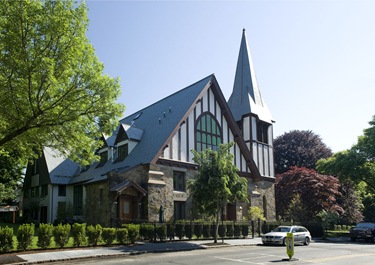
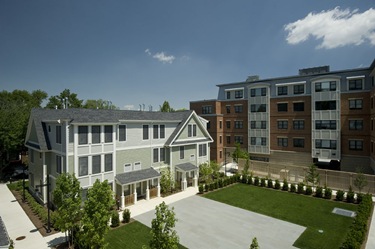
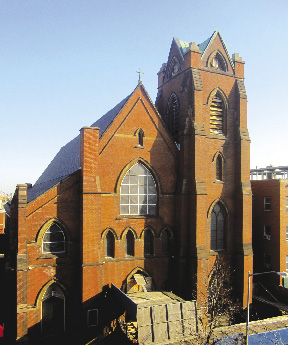
:format(webp):no_upscale()/cdn.vox-cdn.com/uploads/chorus_asset/file/9806841/163_N_6th_St_exterior.jpg)
:format(webp):no_upscale()/cdn.vox-cdn.com/uploads/chorus_asset/file/9806817/163_N_6th_St_main.jpg)
